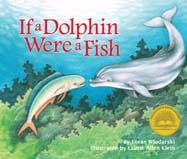Alignment to Standards for RI

| Grade | Number | Standard |
|---|---|---|
| 2,3 | LS1(3-4) FAF-4a | how the physical structure/characteristic of an organism allows it to survive and defend itself (e.g. of a characteristic- the coloring of a fiddler crab allows it to camouflage itself in the sand and grasses of its environment s |
| 2,3 | LS1(3-4) FAF-4b | analyzing the structures needed for survival of populations of plants and animals in a particular habitat/environment (e.g. populations of desert plants and animals require structures that enable them to obtain/conserve/ retain water). |
| 2,3 | LS2(3-4) SAE-5a | Identifying sources of energy for survival of organisms (i.e. light or food). |
| 2,3 | LS2(3-4) SAE-6c | plants and animals in that habitat depend on each other. |
| 2,3 | LS4 (3-4) FAF--8b | comparing and analyzing external features and characteristics of humans and other animals. |
| 2,3 | LS4 (3-4) POC-9a | Identifying similarities that are inherited from a biological parent. |
| 2,3 | LS4 (3-4) POC-9b | identifying that some behaviors are learned and some behaviors are instinctive. |
| K-2 | LS1(K-2) FAF-4a | identifying the specific functions of the physical structures of a plant or an animal (e.g. roots for water; webbed feet for swimming). |
| K-2 | LS2(K-2) SAE-6b | using information about a simple food web to determine how basic needs (e.g. shelter and water) are met by the habitat/environment. |
| K-2 | LS4 (K-2) FAF--8b | observing, identifying, and recording external features of humans and other animals. |
| K-4 | LS1(K-4) FAF-4 | the physical structures of an organism (plants or animals) allow it to survive in its habitat/environment (e.g., roots for water; nose to smell fire). |
| K-4 | LS2(K-4 SAE)-6 | Describe ways plants and animals depend on each other (e.g., shelter, nesting, food). |
| K-4 | LS2(K-4) SAE-5 | energy is needed for all organisms to stay alive and grow or identify where a plant or animal gets its energy. |